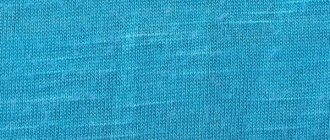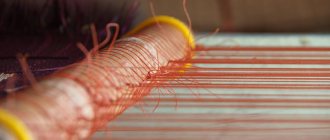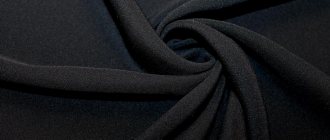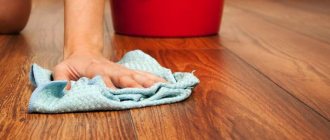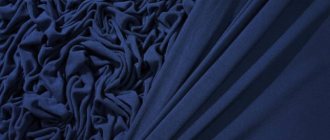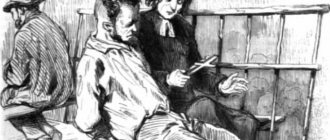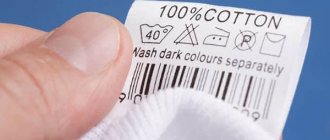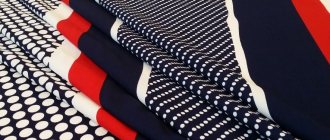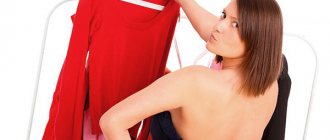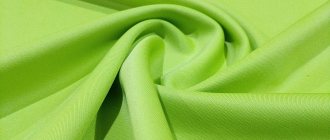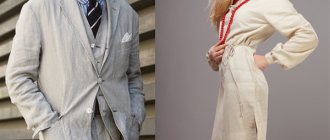History of fabric
Viscose is a young fabric. The technology for producing artificial fabric fibers from natural plant materials was invented at the end of the 19th century. Scientific developments were carried out earlier, but did not bring success. The French scientist Guiller de Chardonnay presented the world with the prototype of viscose in 1889. But his discovery did not spread further due to a significant drawback: the invented fabric was easily flammable.
Chemists from England Charles Cross and Edward Bevan improved the fabric production process and in 1892 received a patent for viscose. The material began to be used in the textile industry.
The name of the fabric comes from the Latin language, translated as “viscous”, reflects the process of creating the material from a thick viscous mass of recycled cellulose.
How it is produced
Viscose is produced from waste from the wood processing industry: tree bark and sawdust. The raw material for its creation is wood cellulose. The fiber creation process consists of successive steps.
- Prepare the raw materials. The wood is crushed into small chips and boiled in an alkaline solution under pressure for 24 hours. A gray viscous cellulose mass is obtained.
- The mass is squeezed through special small filters, forming fibers, and placed in an acid solution.
- The fibers are processed, given the required appearance and properties, bleached, and dyed.
- The resulting threads are dried.
Searched for with this fabric: bamboo fabric
Viscose threads can be divided into 3 groups:
- thin textile thread;
- durable and dense technical cord thread;
- short staple thread.
To create the fabric, various types of thread weave are used: plain, twill, satin, jacquard; products woven with finely patterned weaving are often found. The appearance of the fabric depends on the weaving method.
Application
- Viscose is used for sewing casual clothes for children and adults: dresses, skirts, T-shirts, blouses, shirts.
- The fabric is used to make beautiful evening dresses .
- The material is suitable for sewing home clothes , underwear and sleepwear.
- Home textiles are made from viscose : pillows, blankets, bedspreads, bed linen, curtains, tablecloths.
- The fabric is used as lining material .
- The material is used in the shoe industry to make the top layer of shoes.
Length
As reviews indicate, viscose dresses are loved by many women of different ages. Thanks to the variety of models, you can choose the appropriate length:
- Long. Floor-length products have a loose silhouette. Long viscose dresses are great for special occasions. They suit different body shapes. The main thing is to choose appropriate accessories to highlight your waist and neckline. Greek style dresses are especially popular. The most attractive colors include white, pink, cherry, and azure colors.
- Midi. Such models usually have a fitted bodice and a full skirt. The outfit is suitable for a date and a day out. For cooler times, choose something with long sleeves, and short sleeves are suitable for spring and summer. The color should be chosen depending on the situation. For an official meeting or work, a plain item is suitable.
- Short. Summer dresses made of viscose usually have this length. Lightweight products have bright colors and multi-color prints. Evening dresses are usually monochromatic. Black viscose products are especially original.
All models of viscose dresses are original. You should choose clothes depending on the occasion so that they are appropriate.
Description of the fabric: properties and composition
A special feature of viscose is that it absorbs the properties of the fibers included in its composition. Cotton gives it density and softness, elastane gives it elasticity and the ability to stretch according to the figure, polyester adds strength to the fabric and reduces wrinkles. By changing the combination of fibers in the fabric, one production technology can produce a variety of materials, in one case suitable for sewing transparent summer blouses, and in another - for the production of the lining of a warm coat. Viscose has a wide range of colors, from plain fabric of various colors to fabric with bright floral prints and original designs.
The basis of viscose fabric is cellulose. Additionally, the fabric may include cotton and synthetic threads.
Viscose by type of finish:
- smoothly painted;
- printed;
- variegated;
- bleached.
How to sew things from viscose and care for them?
Before making a product, the question arises: what kind of material is viscose and how will it behave when sewing? Every craftswoman should know what threads and needles are used to sew the material, what should be done if the parts move or slide? The main thing is that such material needs to be decatified. Before cutting, the fabric must be moistened, as it “shrinks”.
Basic recommendations when sewing viscose products:
- Experts recommend using synthetic threads No. 80. They are strong, do not tear when the fabric is stretched, and the stitching is smooth and beautiful.
Assortment of threads
- A needle with a fine spherical sharpening of the tip No. 70 or No. 80 is used. And lycra is sewn with a needle with a normal spherical sharpening of the tip. To obtain a beautiful stitch, you need viscose thread No. 40. To sew spandex, craftswomen use acrylic or viscose thread No. 40.
- After cutting the fabric, the sections fall off, so you need to increase the seam allowances and manually process them with a buttonhole stitch or an overlocker.
Processing slices
Types of fabric, purpose and characteristics
- 100% viscose has no additives and consists entirely of cellulose fibers. The material is soft and delicate to the touch, shiny in appearance, low-strength and inelastic. Elasticity is 2-3%. Thin summer dresses are made from the fabric.
- Tencel is made from eucalyptus cellulose. It turns out to be soft and durable, breathable and hygroscopic, used for sewing bed linen and home textiles, and requires careful adherence to care rules to avoid deformation of the product.
- Modal contains 100% cellulose fibers or is diluted with cotton threads. This durable fabric wicks moisture away from the body, allows air to pass through, and is an artificial analogue of cotton. The fabric is used to make high-quality bed linen and casual clothing for adults and children.
- Acetate is made from cellulose waste. Lightweight, thin material, the distinctive properties of which are resistance to creasing and deformation. The fabric does not allow air to pass through well, absorbs little moisture, and is vulnerable to chemicals. Used as lining material.
- Cupra is viscose of the highest quality, with a texture reminiscent of silk. Used in sewing beautiful dresses, evening dresses and festive suits.
- Siblon consists of cellulose from coniferous trees. It is the result of long-term scientific experiments to improve viscose fabric. The material feels like natural silk to the touch and has all the positive qualities of viscose, enhanced by 1.5-2 times. The fabric is hygroscopic, breathable, not prone to shrinkage and creasing, and hygienic. Ideal for formal wear.
- Polyviscose consists of viscose and polyester fibers, combining their properties. The fabric is durable, warm, wear-resistant, wrinkle-resistant, ideal for sewing school uniforms and men's office suits.
Stylish looks
Thanks to a viscose dress, you can create stylish images, everything is determined by style and wishes. To achieve a classic business style, you need plain clothes in pastel colors. The length of the dress should be up to the knee. You will also need stiletto heels and a small clutch to match.
For everyday wear, bright items are suitable, which can be complemented with jeans and sneakers. You can take models with a print or an original pattern that stands out against a background of rich color. A cap or bright backpack will be a great addition.
You can create an evening look with an elegant dress, preferably black. Heels and a clutch will be great additions. You can choose precious metals or stones for decoration.
Viscose dresses are stylish and comfortable. A large selection of products will allow you to choose clothes for different occasions. A skillful combination will help create harmonious images.
Advantages and disadvantages
The advantages of the fabric are:
- aesthetic qualities,
- beauty of appearance;
- ease;
- hypoallergenic;
- environmental friendliness;
- softness,
- pleasant tactile sensations from touching the body;
- heat-regulating properties;
- ability to pass air;
- hygroscopicity;
- antistatic;
- color fastness and brightness.
When dry, viscose is a durable fabric. When it becomes wet, it loses strength and becomes easily susceptible to mechanical stress.
Flaws:
- whimsical care;
- high creasing;
- vulnerability to high temperatures and ultraviolet radiation.
Comparison with cotton and polyester
“Cotton synthetics” is the common name for viscose among buyers. to polyester due to its artificial creation mechanism. But unlike synthetics, which are a completely chemical product, viscose is made from natural wood raw materials. Viscose differs from polyester in many qualitative characteristics. The properties of the fabric are more like cotton : it is light and pleasant to the body, absorbs moisture well, allows the body to breathe, and does not electrify.
Care instructions
It is difficult to care for viscose products. If washing and ironing rules are not followed, there is a high risk of deformation, shrinkage, and formation of pellets on the surface. To maintain the presentable appearance of the product, you must carefully follow the recommendations indicated by the manufacturers on the label.
General recommendations:
- It is better to wash products by hand; if machine washing is unavoidable, use the delicate wash mode;
- water temperature when washing is 30 degrees;
- do not use laundry detergents with aggressive chemical components;
- there is no need to forcefully wrinkle or rub the item, washing should be gentle and careful;
- do not twist the fabric, use a terry towel to wring it out: carefully lay the item on it and roll it into a roll, the towel will absorb excess moisture;
- You need to dry viscose products on a flat horizontal surface, having first carefully straightened them;
- iron at minimum iron temperature;
- steaming and spraying with water from a spray bottle when ironing is prohibited;
- Store away from direct sunlight.
Handwash
Manual processing is the best option for caring for items made from delicate fabrics. If possible, using this method will significantly extend the life of things.
For completely manual processing, the washing order should be as follows:
- Pour water into the basin with a temperature no higher than +30ºС.
- Dissolve the detergent.
- Immerse the clothes in the basin.
- Leave for 30 minutes.
- Wash carefully - not by rubbing, but by massaging movements.
- Rinse - in several changes of water or under a running stream.
After washing, the water should be allowed to drain freely without spinning. Twisting and squeezing into a lump can lead to the formation of strong creases, which will be very difficult to remove.
Pre-soaking is not a mandatory washing step and can only be used if the clothing items are significantly soiled.
Customer Reviews
Summer clothes made of viscose are popular; in hot weather it gives the skin a feeling of coolness. Buyers are pleased with the variety of colors of clothing and color fastness, lightness, softness. Users warn that the fabric absorbs foreign odors well, wrinkles a lot and becomes deformed if not properly cared for. There are endless debates about viscose: is it a natural material or is it synthetic? Despite its artificial origin, the fabric is popular in the fashion world; products made from it are actively purchased and worn well, are of high quality and provide comfort when worn.
Colors
Most often there are products with a variegated print. You can choose an outfit with geometric patterns, floral motifs or abstract designs. With this bright color, straight-cut items look unusual. The most popular dresses are the following colors:
- mustard;
- black;
- turquoise.
Considering the reviews, items in pastel, green, and blue colors are no less popular. Models made of viscose that combine several colors are considered fashionable. In such clothes, the collar, hem or sleeves can be contrasting. Outfits with ornaments or edging along the edges of the skirt or sleeves are original.
Video: what is viscose?
Watch an interesting video about what viscose is, what the material is made from, what properties the fabric has and what they depend on.
See similar articles
- Matting is a rough natural fabric that is pleasant to the touch
- Crepe satin is a wrinkle-resistant fabric with a silky sheen.
- Cashmere is a lightweight, warm fabric made from natural wool.
- Jacquard - dense fabric with ornaments
- Alpaca is a unique fabric made from long pile wool.
- Chenille - thick velvety fabric for interiors
If you liked the article, share it with your friends!
